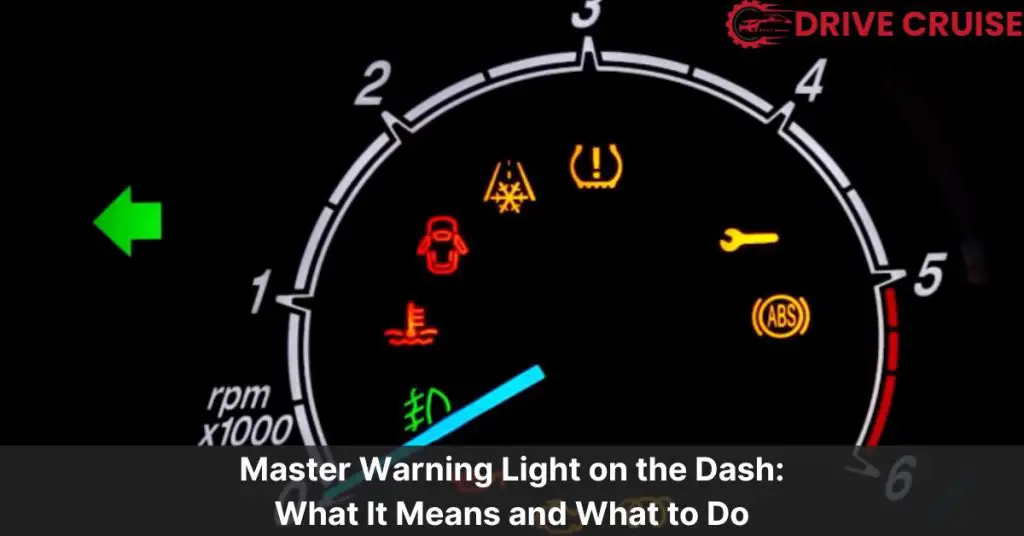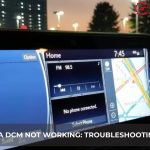The master warning light on the dashboard of your car is designed to alert you of potential issues with your vehicle. This warning light is typically represented by a red triangle with an exclamation mark (!) and can be accompanied by other warning lights or audible alerts. While the exact meaning of the master warning light may vary depending on your vehicle’s make and model, it always indicates a critical system issue that requires attention.
So, what is a master warning light? Essentially, it’s your car’s way of telling you that something is wrong. The master warning light is a universal symbol that appears on the dashboard of most modern cars, and it’s designed to alert you to potential issues with your vehicle’s systems. While the exact meaning of the master warning light can vary depending on your car’s make and model, it’s important to take this warning seriously and address any issues as soon as possible.
If you see the master warning light on your dashboard, it’s crucial to understand what it means and take appropriate action. In the following sections, we’ll explore some of the potential causes of the master warning light, discuss what to do when it comes on, and provide tips for preventing future issues. Whether you’re driving a Toyota, Honda, or any other make of car, this guide will help you navigate the master warning light and keep your vehicle running smoothly.
Cracking the Code: Understanding the Master Warning Light
The master warning light is an essential part of your vehicle’s alert system. It serves as a central alert system, indicating a malfunction that could impact various vehicle functions. While the exact cause can differ, it typically signifies one or more of the following:
Critical System Issues
Engine
Problems like low oil pressure, overheating, or severe engine malfunctions can trigger the master warning light. If the engine is malfunctioning, it can lead to significant damage to your vehicle. It’s crucial to take immediate action and get your vehicle checked by a certified mechanic.
Brakes
Malfunctioning brakes or critically low brake fluid can be a major safety concern and trigger the warning light. If the light comes on, it’s essential to pull over to a safe location and avoid driving until the issue is resolved.
Electrical System
Issues with the battery, alternator, or other electrical components can disrupt essential vehicle functions and illuminate the light. If the electrical system is malfunctioning, it can lead to significant damage to your vehicle. It’s crucial to take immediate action and get your vehicle checked by a certified mechanic.
Airbag System
A malfunction within the airbag system can trigger the master warning light, indicating potential safety concerns. If the light comes on, it’s essential to get your vehicle checked by a certified mechanic to ensure your safety.
Transmission
Problems with the transmission, such as overheating or slipping gears, can be a cause for the warning light. If the transmission is malfunctioning, it can lead to significant damage to your vehicle. It’s crucial to take immediate action and get your vehicle checked by a certified mechanic.
Additional Possibilities
Low Windshield Washer Fluid
In some vehicles, a low windshield washer fluid level might trigger the master warning light, although this is less critical than the previous issues. If the light comes on due to low windshield washer fluid, it’s a simple fix that you can take care of yourself.
Manufacturer-Specific Issues
Certain car manufacturers might have additional reasons for the master warning light to illuminate, as indicated in the owner’s manual. It’s essential to read the owner’s manual carefully to understand the manufacturer-specific issues that could trigger the master warning light.
Taking Action: What to Do When You See the Master Warning Light
If you see the master warning light on your dashboard, don’t panic. Here’s what you should do:
Pull Over Safely
Your safety is the top priority, so if the warning light illuminates while driving, find a safe location to pull over as soon as possible and turn off the engine.
Consult Your Owner’s Manual
Your vehicle’s owner’s manual is your best resource for specific information regarding the master warning light and potential causes based on accompanying symptoms, such as unusual noises or warning messages. Be sure to read the manual carefully to understand what the warning light is indicating.
Perform a Visual Inspection
If it’s safe to do so, conduct a quick visual check under the hood for any obvious leaks, loose connections, or signs of damage. This may help you identify the cause of the warning light and determine if it’s safe to continue driving.
Seek Professional Help
Given the potential severity of the issue, it’s crucial to seek professional assistance. Schedule an appointment with a qualified mechanic or dealership for proper diagnosis and repair.
Remember, ignoring the master warning light can lead to more serious and costly problems down the road. So, take action as soon as possible to keep your vehicle running smoothly and safely.
Sources:
- “What Does the Master Warning Light Mean? Plus FAQ”
- “Master Warning Light: What It Signals on Your Dashboard”
- “Toyota Master Warning Light Explained: A Comprehensive Guide”
Beyond the Basics: Advanced Tips for Understanding the Master Warning Light
If you’re reading this, you’re probably looking for more information about the master warning light on your car’s dashboard. While the basics of the warning light have been covered in other sections, this section will provide you with advanced tips for understanding the master warning light.
Accompanying Warning Lights
When the master warning light illuminates on your dashboard, it is often accompanied by other warning lights. These additional warning lights can provide more specific clues about the issue that needs attention. Refer to your owner’s manual for deciphering these additional warnings. Some common accompanying warning lights include:
- Low tire pressure warning light
- Check engine warning light
- Battery warning light
- Oil pressure warning light
- Brake system warning light
Vehicle Behavior
Pay attention to any changes in vehicle behavior that coincide with the master warning light. These changes can include unusual noises, vibrations, or performance issues. These details can be valuable for the mechanic during diagnosis. Some common vehicle behaviors to look out for include:
- Difficulty starting the engine
- Rough idling
- Stalling
- Lack of power or acceleration
- Overheating
Model-Specific Information
While this guide provides a general overview, some car manufacturers might have unique functionalities or warning light behaviors. Research online resources or consult your owner’s manual for specific details regarding your vehicle make and model. Here are some model-specific information for some car brands:
- Toyota: The Toyota Master System Warning Light is a multi-information display that provides information about various systems in the car. The warning light can indicate issues with the hybrid system, brake system, or other systems.
- Lexus: The Lexus Master Warning Light Meaning is similar to the Toyota Master System Warning Light and can indicate issues with various systems in the car.
- Nissan Altima: The Master Warning Light on Nissan Altima can indicate issues with the engine, transmission, or other systems.
- Hyundai Santa Fe: The Master Warning Light on Hyundai Santa Fe can indicate issues with the engine, transmission, or other systems.
- Toyota Camry: The Master Warning Light on Toyota Camry can indicate issues with the hybrid system, brake system, or other systems.
- Prius: The Prius Master Warning Light can indicate issues with the hybrid system, brake system, or other systems.
- Nissan: The Nissan Master Warning Light can indicate issues with the engine, transmission, or other systems.
- Hyundai: The Hyundai Master Warning Light can indicate issues with the engine, transmission, or other systems.
- Toyota Highlander: The Master Warning Light on Toyota Highlander can indicate issues with the hybrid system, brake system, or other systems.
- Kia: The Kia Master Warning Light can indicate issues with the engine, transmission, or other systems.
Conclusion
In conclusion, the master warning light on your vehicle’s dashboard is an important indicator that should not be ignored. It serves as a critical alert system that notifies you of potential issues with your car.
If the master warning light comes on, the first step is to check your owner’s manual for guidance. The manual will provide you with specific information about the warning light and what actions to take.
Some of the potential causes of the master warning light include low tire pressure, engine performance problems, and issues with the vehicle’s maintenance. It is important to take appropriate action to resolve the issue to ensure your safety and prevent further damage to your vehicle.
Related Posts:







